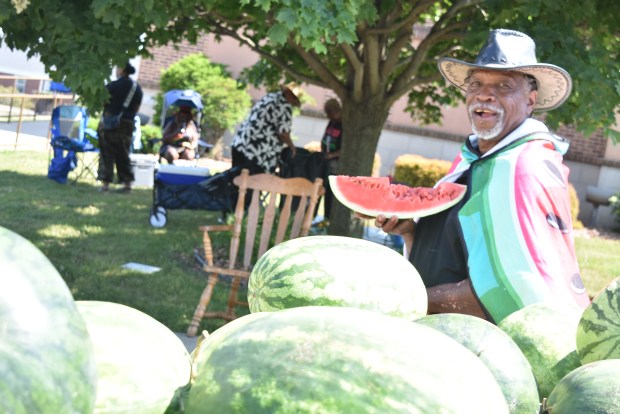Imagine having the opportunity to plan your own town and how much knowledge would be required in terms of construction, engineering and all the amenities needed to make it thrive.
That would be a tough task for anyone, especially a group of third graders, but Jessica Lichtenfeld and Lauren Andree’s group of 29 “high ability” students at Beiriger Elementary in Griffith recently took on such a project, theoretically speaking.
Recently, the students donned hardhats, goggles and safety vets (donated by Performance Services and NIPSCO) and got to work, creating their town’s concept area and perimeter while performing the various job site roles. They had prepared for two weeks to take on the various tasks, but it was all a surprise when they arrived at school one day, with the classrooms decked out in a construction motif.
“It keeps the students on their toes,” Lichtenfeld said. “They never know what to expect, and it makes them excited to come to school.”
As the students planned out their town, they accounted for various buildings, parks and attractions to create great place to live, work and raise a family.
Tackling a real-world challenge
Explaining the inspiration behind the classroom project, Lichtenfeld said that she and Andree wanted to pursue a topic that was difficult for students to understand or where perhaps their engagement is limited. They purposely build in a high-interest topic to help the students buy into the process.
“If students are engaged, posed with a challenging problem, and provided with the correct scaffolding, they can thrive and surpass our expectations,” she said. “The construction site allowed students to take on a role they may see from a family member or friend and picture themselves in that same role one day.”
She added that it’s important to always connect their skills as teachers to real-world situations where their students can see what they are studying be applied in everyday life.
“By creating these experiences for our students, we are able to make sure they have a memorable, hands-on experience for an important content area,” Lichtenfeld said.
A complicated project for students and teachers
The teachers knew this would be no easy lesson plan, and that they would have to put in plenty of time learning for themselves to articulate it.
“When creating projects of this magnitude, it is helpful to look for possible misconceptions,” Andree said. “We needed to be prepared to help our students work through these misconceptions, find the error in their ways, and proceed to the correct solution. We work on error analysis quite often, which has prepared them to take a closer look at their work and pinpoint any mistakes. Once the error is located, they can then move forward in their assignment.”
To prepare their students, they studied the definition of area and perimeter, how to find each in regular and irregular shapes, and how they are applied in the real world in the two weeks preceding construction day. They also discussed how carpenters, framers and fencers need to be able to calculate area and perimeter when constructing buildings.
“Our construction day closed out our area and perimeter unit,” Lichtenfeld said. “Students were able to take these skills and apply them to various tasks — area/perimeter of their name, measuring shapes and finding their area and perimeter, how to decompose numbers, and finding missing side lengths. All students had the same eight tasks in which they rotated through.”
Most popular among the students were the name construction and the distributive property shape puzzles they did, according to the teachers. The name construction assignment gave students the creative freedom to build their town’s name to their liking. Once they were done forming their name on grid paper, they then determined the area and perimeter of each letter.
The distributive property shape puzzles displayed a shape with unknown side lengths. Students had to determine the missing side lengths, then use the distributive property of multiplication to find the total area of each shape.
The builders of tomorrow
Looking back, the teachers believe they have some future engineers and construction workers in their classes.
“Many of our students prefer working with their hands over the traditional paper/pencil work,” Andree said. “We believe there should be a balance between traditional assignments and project-based learning. These types of activities give our hands-on learners a chance to shine and create something they can be proud of. This unit shows that we support all types of future careers, not just college-based programs.”
Jim Masters is a freelance reporter for the Post-Tribune.




